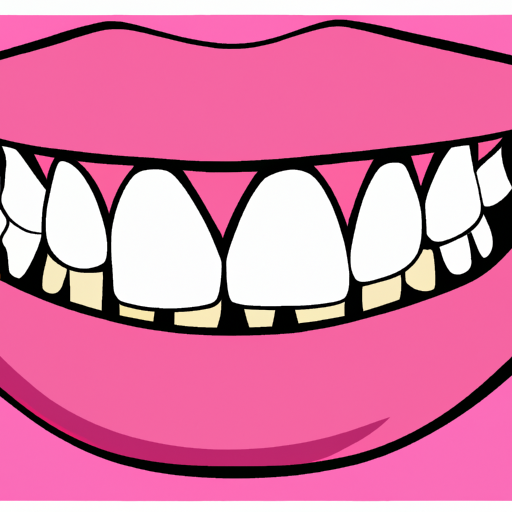Dental treatment is an essential aspect of maintaining oral health for individuals of all ages. However, when it comes to patients with special needs, providing adequate dental care can pose unique challenges. These individuals often require tailored diagnosis, treatment, and care strategies that cater to their specific needs. This article aims to delve into the world of dental treatment for patients with special needs, exploring the diagnosis, symptoms, effective strategies, and techniques, as well as the causes and challenges associated with providing dental care for these individuals. By understanding the unique dental needs of patients with special needs, dental professionals can ensure that they receive the necessary care and support to maintain their oral health and overall well-being.
1. "Understanding the Unique Dental Needs of Patients with Special Needs: Diagnosis and Symptoms"
Patients with special needs often require unique dental treatment due to their specific diagnosis and symptoms. Understanding their dental needs is crucial for providing appropriate care and ensuring their oral health.
Diagnosing dental issues in patients with special needs can be challenging as their communication and cognitive abilities may vary. Dentists must employ a comprehensive approach, taking into account not only the patient’s dental history but also their medical history and any underlying conditions that may affect their oral health.
Common symptoms seen in patients with special needs can include difficulty with chewing or swallowing, abnormal tooth development, malocclusion, and oral sensory issues. These symptoms may be caused by a variety of factors such as genetic disorders, developmental disabilities, or medical conditions.
For instance, individuals with Down syndrome often have a higher risk of developing dental problems such as gum disease, tooth decay, and malocclusion. This is due to factors such as delayed eruption of permanent teeth, smaller jaws, and poor muscle tone in the oral cavity. Similarly, patients with autism spectrum disorder may exhibit sensory sensitivities that make dental procedures challenging and may result in anxiety or behavioral issues during dental visits.
Moreover, patients with special needs may have difficulty maintaining proper oral hygiene due to physical limitations, cognitive impairments, or a lack of understanding of oral care practices. This can lead to an increased risk of oral diseases, emphasizing the importance of regular dental check-ups and professional cleanings.
Understanding the unique dental needs of patients with special needs is essential for providing them with the necessary care and support. Dentists should work closely with caregivers, healthcare providers, and specialists to develop personalized treatment plans that address both the dental concerns and the
2. "Tailoring Dental Treatment for Patients with Special Needs: Effective Strategies and Techniques"
When it comes to providing dental treatment for patients with special needs, one size certainly does not fit all. Each individual requires a tailored approach that takes into account their unique circumstances and challenges. Effective strategies and techniques play a crucial role in ensuring that these patients receive the dental care they need in a safe and comfortable environment.
One of the key aspects of tailoring dental treatment for patients with special needs is understanding their diagnosis. Special needs encompass a wide range of conditions, including but not limited to intellectual disabilities, autism spectrum disorders, cerebral palsy, Down syndrome, and sensory processing disorders. Each diagnosis brings its own set of symptoms and challenges that must be considered during treatment.
To provide effective dental care, it is essential for dentists and their teams to have a comprehensive understanding of the patient’s diagnosis and how it may impact their oral health. This knowledge allows for the development of customized treatment plans that address specific symptoms and concerns.
The treatment itself should also be adapted to accommodate the patient’s needs. For example, patients with sensory processing disorders may have heightened sensitivities to touch, taste, and sound. In such cases, dentists can utilize techniques like desensitization therapy to gradually introduce dental equipment and procedures, ensuring the patient feels more comfortable and less overwhelmed.
Communication is another critical factor in tailoring dental treatment for patients with special needs. Dentists should employ clear and simple language to explain procedures and provide reassurance. Visual aids, such as pictures or diagrams, can also be used to enhance understanding. Additionally, dentists should encourage patients to express their concerns and preferences, allowing them to feel more involved in their treatment.
Creating a supportive and calming environment is
3. "Exploring the Causes and Challenges Associated with Dental Care for Individuals with Special Needs"
Individuals with special needs often face unique challenges when it comes to receiving dental care. There are several causes that contribute to these challenges, making it important for dental professionals to understand and address them effectively.
One of the main causes is the presence of underlying medical conditions or disabilities that can affect oral health. Some individuals with special needs may have conditions such as Down syndrome, cerebral palsy, autism, or intellectual disabilities, which can impact their oral health in various ways. For example, certain medical conditions can lead to developmental delays, poor muscle coordination, or difficulties in maintaining good oral hygiene practices. These factors can result in an increased risk of dental problems, such as tooth decay, gum disease, and oral infections.
Another cause is the limited communication and understanding abilities of individuals with special needs. Many of them may struggle to express their dental concerns or cooperate during dental procedures. This can make it challenging for dental professionals to accurately diagnose dental issues and provide appropriate treatment. Additionally, individuals with special needs may have sensory sensitivities or fears related to dental visits, further complicating their ability to receive necessary dental care.
Furthermore, the lack of accessibility and accommodations in dental offices can pose significant challenges for individuals with special needs. Dental offices may not be equipped with the necessary facilities or equipment to cater to the specific needs of these patients. For instance, individuals with mobility issues may require wheelchair accessibility or specialized dental chairs. Additionally, the lack of specialized dental professionals who are trained to handle patients with special needs can also hinder their access to proper dental care.
Addressing these challenges requires a collaborative approach between dental professionals, caregivers, and individuals with special needs themselves. Dentists should undergo training







